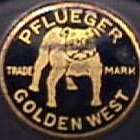
bulldog1935 replied to DN3's topic in Fishing Rods, Reels, Line, and Knots

bulldog1935 replied to waymont's topic in Fishing Rods, Reels, Line, and Knots

bulldog1935 replied to waymont's topic in Fishing Rods, Reels, Line, and Knots

bulldog1935 replied to QED's topic in Fishing Rods, Reels, Line, and Knots

bulldog1935 replied to QED's topic in Fishing Rods, Reels, Line, and Knots

bulldog1935 replied to DN3's topic in Fishing Rods, Reels, Line, and Knots

bulldog1935 replied to Creek Chub 1's topic in Fishing Rods, Reels, Line, and Knots

bulldog1935 replied to Creek Chub 1's topic in Fishing Rods, Reels, Line, and Knots

bulldog1935 replied to Creek Chub 1's topic in Fishing Rods, Reels, Line, and Knots

bulldog1935 replied to 5/0's topic in Fishing Rods, Reels, Line, and Knots

bulldog1935 replied to Creek Chub 1's topic in Fishing Rods, Reels, Line, and Knots

bulldog1935 replied to shawnh6243's topic in Fishing Rods, Reels, Line, and Knots

bulldog1935 replied to farmpond1's topic in Fishing Rods, Reels, Line, and Knots

bulldog1935 replied to 5/0's topic in Fishing Rods, Reels, Line, and Knots

bulldog1935 replied to AJ Hauser's topic in Fishing Rods, Reels, Line, and Knots

bulldog1935 replied to AJ Hauser's topic in Fishing Rods, Reels, Line, and Knots
We have placed cookies on your device to help make this website better. You can adjust your cookie settings, otherwise we'll assume you're okay to continue.

